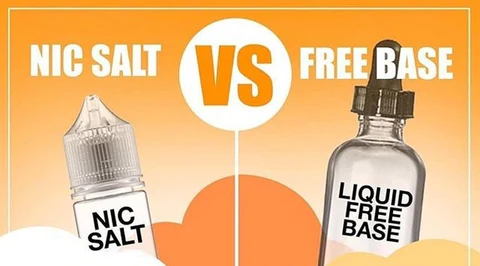The Difference Between Freebase 50-50 E-Liquids and Nicotine Salts: Understanding the Basics
If you’re new to vaping, you might have heard of freebase 50-50 e-liquids and nicotine salts, but what exactly are they, and what’s the difference between the two? In this article, we’ll explore the basics and help you understand the difference between these two popular types of e-liquids.
Freebase 50-50 E-Liquids:
Freebase e-liquids are the most common type of e-liquid used in vaping. They are made using a simple formula of vegetable glycerin (VG), propylene glycol (PG), flavorings, and freebase nicotine. The 50-50 in the name refers to a 50/50 ratio of VG to PG, which provides a balance of flavor and vapor production. Freebase e-liquids are best suited to high wattage devices, as they deliver a stronger hit of nicotine.
Nicotine Salts:
Nicotine salts are a newer type of e-liquid that have gained popularity in recent years. They are made using a more complex formula, which includes nicotine, benzoic acid, and flavorings. The benzoic acid helps to reduce the harshness of the nicotine, making it smoother to inhale. Nicotine salts are best suited to low wattage devices, as they deliver a more controlled hit of nicotine.
The main difference between freebase 50-50 e-liquids and nicotine salts is the type of nicotine used and the way it’s delivered. Freebase e-liquids use a more traditional form of nicotine, while nicotine salts use a modified form of nicotine that’s smoother to inhale. This means that nicotine salts are best suited to those who are looking for a more discreet and controlled vaping experience, while freebase e-liquids are best suited to those who are looking for a stronger hit of nicotine.
In conclusion, whether you choose freebase 50-50 e-liquids or nicotine salts will largely depend on your personal preference and the type of vaping experience you’re looking for. Both types of e-liquids have their own benefits and drawbacks, so it’s important to consider these before making a decision.


